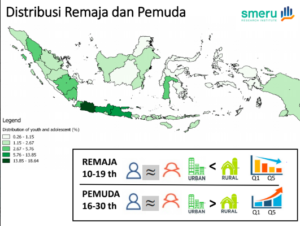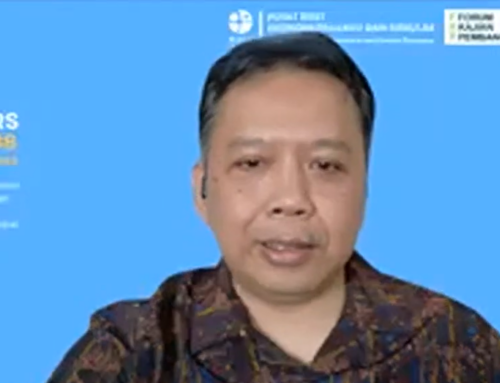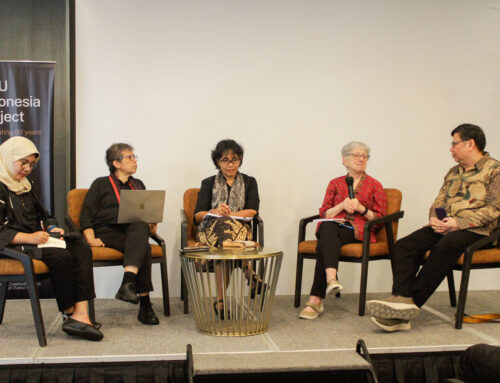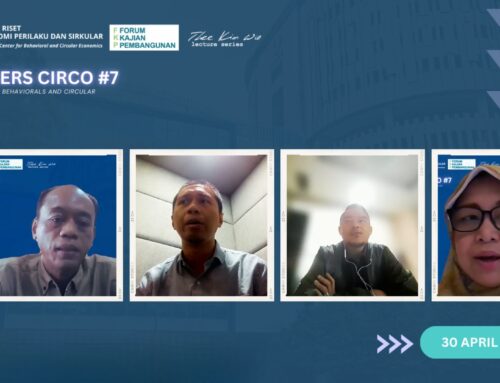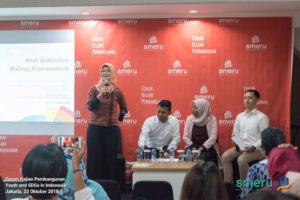 Sustainable Development Goals (SDGs) was introduced in 2012 and are set to be achieved by the year 2030. By then, youth would be the successor of the nation. With that in mind, the current state of youth development in Indonesia becomes detrimental to the achievements of SDGs in the future. Why? On Tuesday, 23 October 2018 SMERU Research Institute hosted another FKP event with the topic of youth and SDGs in Indonesia.
Sustainable Development Goals (SDGs) was introduced in 2012 and are set to be achieved by the year 2030. By then, youth would be the successor of the nation. With that in mind, the current state of youth development in Indonesia becomes detrimental to the achievements of SDGs in the future. Why? On Tuesday, 23 October 2018 SMERU Research Institute hosted another FKP event with the topic of youth and SDGs in Indonesia.
Elza Elmira (SMERU Institute) presented her research on SDG baseline on youth. Youth, defined as those who are between the ages of 16-30, are believed to play an important role in achieving the SDGs in Indonesia because of the shift of the population structure, also known as the demographicic bonus, projected to happen around year 2025-2030. With the increasing proportion of youth in the population, they are believed to be the agent of change in achieving SDG goals.
Out of the 17 goals, Elza picked 14 to analyze the indicators of achievement. In general, Indonesia has the potential to achieve these goals, with youth being both the object as well as the subject of development. However, current conditions show that we are still behind in many aspects, such as poverty, nutrition, education, and youth’s contribution in the society, especially in eastern Indonesia. According to Elza, if Indonesia were to take part in Industry 4.0, the government still has a lot of catching up to do. Looking forward, she proposes the government to adopt a life-cycle approach, which means that the government needs to intervene at every stage of life.
Tyovan Ari Widagdo (CEO of Bahaso, an online language learning platform) shared his knowledge and experience on youth entrepreneurship. As someone who started his business during his high school days, he believes that the biggest hindrances for youth in starting up their business are access to financing, limited business skills, access to mentors, inadequate infrastructure, and cumbersome administrative and legal requirements. However, with the rise of many new young startup leaders such as Nadi
Lastly, Woro Srihastuti Sulistyaningrum (Director of Family, Women, Children, Youth, and Sports, BAPPENAS) shared the Indonesian government’s policy direction regarding youth. Youth Development Index in Indonesia has risen in recent years, and across ASEAN, 38% of the population within the productive age comes from Indonesia. This means that Indonesia has the potential to fulfill the region’s demand for labor. This proportion will increase with the incoming demographic bonus. Currently, the government is focusing on 5 main aspects of development, which are education, youth participation, politics and citizenship (improving tolerance), physical and mental health, and social protection. However, to reap the full benefits of the demographic bonus, the government needs to lower the fertility rate to 2.1 so that the bonus can be lengthened; the government needs to also improve education, health, and good governance, gender equality and job opportunities.
For the complete presentation and Q&A session, please refer to the video and materials provided.
